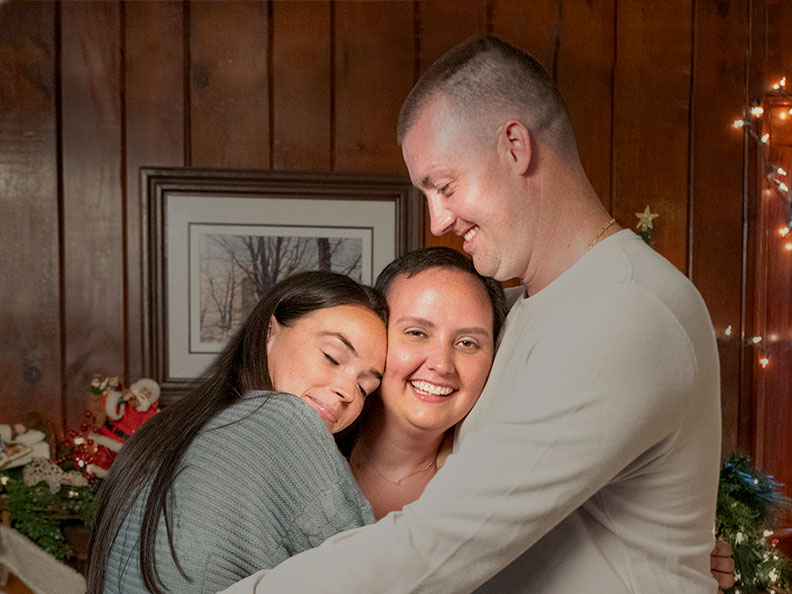Your gift is 100% tax deductible
Targeted Drug Therapy for Prostate Cancer
As researchers have learned more about some of the changes inside prostate cancer cells that help them grow, they have developed newer types of drugs that target these changes.
How targeted drugs work
Targeted drugs attack specific parts of cancer cells that make them different from normal cells. This is different from chemotherapy (chemo) and hormone therapy drugs. Targeted drugs sometimes work when these other types of drugs don’t, and they often have different side effects.
Like chemo and hormone therapy, these drugs enter the bloodstream and reach almost all areas of the body, which makes them useful against some cancers that have spread to distant parts of the body.
PARP inhibitors
PARP (poly(ADP)-ribose polymerase) enzymes are proteins inside cells that normally help repair damaged DNA.
Some other proteins inside cells (including the BRCA1 and BRCA2 proteins) also help repair DNA, but in a different way. Mutations (changes) in genes that code for one of these DNA repair proteins can stop them from working like they should.
Drugs called PARP inhibitors, which block the PARP proteins, make it very hard for tumor cells with an abnormal DNA repair gene (including a BRCA1 or BRCA2 gene change) to repair their damaged DNA, which often leads to the death of these cells.
These drugs are only likely to be helpful if the cancer cells have changes in one of the DNA repair genes. Your doctor will likely test your blood or your cancer cells to be sure the cells have a DNA repair gene change before starting treatment with a PARP inhibitor.
These drugs are taken by mouth as pills or capsules, typically once or twice a day. They are given along with some type of hormone therapy, such as an LHRH agonist or after an orchiectomy.
Rucaparib (Rubraca) can be used to treat metastatic, castration-resistant prostate cancer (mCRPC) that has grown after treatment with hormone therapy with or without taxane chemotherapy (such as docetaxel or cabazitaxel), and when the cancer cells have a change in one of the BRCA genes.
Olaparib (Lynparza) can be used to treat mCRPC, either:
- Along with the hormone therapy drug abiraterone (and a steroid drug such as prednisone), if the cancer cells have changes in one of the BRCA genes
- By itself, if the cancer has grown after getting a hormone therapy drug such as enzalutamide or abiraterone, and the cancer cells have a change in one of the BRCA genes (or other DNA repair genes known as homologous recombinant repair (HRR) genes*)
Talazoparib (Talzenna) can be used along with the hormone therapy drug enzalutamide to treat mCRPC, if the cancer cells have a change (mutation) in a homologous recombination repair (HRR) gene.*
Niraparib plus abiraterone (Akeega) can be used (along with the steroid drug prednisone) to treat mCRPC or metastatic, castration-sensitive prostate cancer (mCSPC) if the cancer cells have a change in one of the BRCA genes.
*HRR genes include: BRCA1, BRCA2, ATM, ATR, BARD1, BRIP1, CDK12, CHEK1, CHEK2, FANCA, FANCL, MLH1, MRE11A, NBN, PALB2, RAD51B, RAD51C, RAD51D, and RAD54L.
Side effects of PARP inhibitors
Some of the more common side effects of these drugs can include nausea, vomiting, diarrhea, fatigue, loss of appetite, low red blood cell counts (anemia), constipation, skin rash, abnormal liver blood tests, low blood platelet counts, cough and shortness of breath. Other side effects are also possible.
Rarely, some people treated with these drugs might develop a blood cancer later on, such as myelodysplastic syndrome or acute myeloid leukemia.
Some men taking olaparib might develop blood clots in the lungs or legs.
More information about targeted therapy
To learn more about how targeted drugs are used to treat cancer, see Targeted Cancer Therapy.
To learn about some of the side effects listed here and how to manage them, see Managing Cancer-related Side Effects.
- Written by
- References

The American Cancer Society medical and editorial content team
Our team is made up of doctors and oncology certified nurses with deep knowledge of cancer care as well as editors and translators with extensive experience in medical writing.
Abida W, Antonarakis ES. Management of advanced prostate cancer with germline or somatic homologous recombination repair deficiency. UpToDate. 2023. Accessed at https://www.uptodate.com/contents/management-of-advanced-prostate-cancer-with-germline-or-somatic-homologous-recombination-repair-deficiency on August 9, 2023.
National Cancer Institute. Physician Data Query (PDQ). Prostate Cancer Treatment – Health Professional Version. 2023. Accessed at https://www.cancer.gov/types/prostate/hp/prostate-treatment-pdq on August 9, 2023.
National Comprehensive Cancer Network (NCCN). Practice Guidelines in Oncology: Prostate Cancer. Version 2.2023. Accessed at https://www.nccn.org/professionals/physician_gls/pdf/prostate.pdf on June 10, 2020.
Last Revised: December 19, 2025
American Cancer Society medical information is copyrighted material. For reprint requests, please see our Content Usage Policy.
American Cancer Society Emails
Sign up to stay up-to-date with news, valuable information, and ways to get involved with the American Cancer Society.



